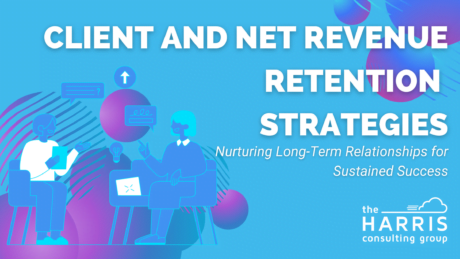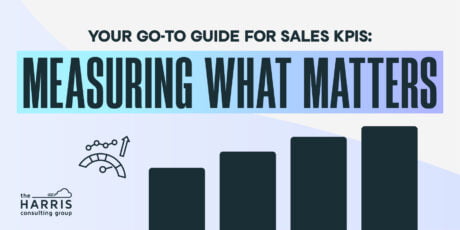Last week, Scott Leese and I were working on this blog post and then had the opportunity of speaking with two revenue operations aficionados from Salesforce, Greg Gsell and William Jager for our Surf and Sales podcast. You can find the episode link at the bottom of this post.

If you are really looking to understand and execute a revenue operations team in 2021, this post and that podcast will provide critical insights into all the things you want to understand.
If we’ve learned one thing in 2020, it’s a deeper understanding of the Darwinian thoughts around, “Adapt or Die”.
In many cases, the evolution begins long before the primary pain really rears its ugly head.
“If it’s not in Salesforce, it didn’t happen”.
This is the mantra many sales leaders have been pontificating for years. It’s practically a religion [with good intentions], but it’s actually a false belief system. The mythology of the mantra has been evolving for a few years now. In fact, it may not even be mainstream. We leave that to the readers to decide.
The Problems:
- Too many silos: marketing, sales, marketing operations, customer success, customer operations, revenue operations, product marketing, product development.
- Field creep in the CRM: everyone looking for the sales team to gather all the information their one specific business unit needs.
- Poor execution of SmartBoards™ (Dashboards that help the reps close the business, not just allow for upper management to find a reason to blame sales when it’s really their fault, but that’s another topic for another time).
- Front-end / back-end systems
The Signals of Change:
- Sales Ops – Coined in the 1970s but has a whole new meaning in SaaS
- SaaS – As the industry shifted from OnPrem to the Cloud the mindset for tracking revenue evolved
- The Internet – On-demand purchasing shifted the buying process
- Omni Channel lead generation – We’ve grown way past TV, Radio, Print Media, and the Yellow Pages
- SEO and SEM giving way to Marketing Ops
- Account-Based Marketing – A holistic view of marketing and sales funnel
- Customer Success – Coined and popularized in 2009
So, when we consider the “If it’s not in Salesforce it didn’t happen” mentality, we can put some stronger hustle behind the muscle.
The answer: Revenue Operations. The evolution from VP of Sales and VP Marketing to an overarching view of the entire revenue operation overseen by a CRO (Chief Revenue Officer). This is the person who will oversee both sales and marketing. The person who is responsible for the entire direction of the revenue for the organization.
We’ve already been doing it in smaller pieces, but this just helps us get to the real knowledge behind the old mentality.
So what does a revenue operations team look like?
Before you get into the nitty-gritty of who does what, we first need a framework. Often this means understanding that a successful revenue operations team will focus on merging the silos.
Specifically, it means looking at data, process, pricing, and people. In that order.
Data – The value of getting it right
First, we have to understand what data matters most. You often start with revenue and work your way backward. Then at each stage, you have to look at the process of touching the data.
For example:
- You want to get to some closed revenue numbers.
- Go back one step, that means you need opportunities.
- Who touches the opportunities from a process perspective?
- What data will we use to generate the leads that turn into opportunities?
This ultimately comes down to quality data. The value of data is equal to the value of a good employee at a minimum. We all know what having the wrong person on the sales team can do to business as well as morale. It’s the same when it comes to data quality.
- The marketing team gets frustrated because of the pressure to succeed but cannot support their goals with bad data.
- Salespeople get frustrated, angry, resentful, and whiny when they dealing with bad data or asked to correct it.
This leads to bad culture, which results in poor efforts, and on top of that, blaming upper management for “not getting it” and management blaming the other departments, often sales. You start to hear things like, “well can’t they just go and fix the data?” or “it is too expensive” from the upper management excuse factory
The outcome? Missed numbers, more pressure, and eventually turnover, now you have two problems, bad data, bad salespeople, bad culture, mistrust, essentially a mess.
Your CRM is the heart of your organization. Think of bad data as the bad cholesterol of the heart. It can be managed but until significant efforts are taken to correct the issue. You run a risk of a heart attack
Here is the reality you need to share with leadership.
How do you fix the data quality?
Explain the following, in great detail.
- It can take 2-3 minutes to find the data, and that is being generous.
- It can take 1-2 minutes to get the data into the CRM.
- It can take 1-2 minutes to get it set up with the right prospecting activity and execute
- So that one email or phone number can take 4-7 minutes before it’s actually acted upon.
- Multiply that by 10 leads, and that’s 40-70 minutes.
- Compare that to what a rep could do with quality data in 40-70 minutes. They could execute on creating opportunities which is actually what they were hired to do in the first place.
So yeah, your bad data is now building in arteries and not only affecting the heart of your organization but perhaps the other vital systems too.
Process – If you don’t have one, you will fail dramatically.
From everything above you can now define your hypothetical process. We say hypothetical because you should expect to change it. It’s a living breathing thing. Should you reach an acceptable v1, you should inspect it within 90 days and look for leaks in your bucket.
Within the process you are trying to track a few things from a sales-related revenue perspective:
- Process Related
- Naming – Make sure it’s not words like (Demo, Proposal), those are things that happen during different parts of the stages, not stage names.
- Aging – What is the average age at each stage?
- Prospect Related
- Titles – Titles first, you determine roles along the way
- Decision Making (DM) Hierarch –
- End-User,
- End-User manager,
- Directors
- VPs / Exec Sponsor,
- Exec Financial Decision Maker
- Posers – anyone who says they can make the decision but still has to “check with the team
- Blockers – Who cannot say yes, but can say no?
- Engineering, Security, Finance, C-Level. Legal
Pricing – The brass tacks
If you don’t have a strong pricing strategy, you will discount yourself right out of business. In many ways, it’s taken for granted. It’s something the CEO and CMO came up with a long time ago, and it sticks, because it’s easy to leave it alone if people are paying you for it.
Pricing is a team sport. It includes people from sales, customer success, finance, marketing, and customers (customer advisory board) at a minimum.
Pricing should always be determined by what the market will bear. This means research on competitors, research with customers, research with prospects, industry leaders, lost opportunities at a minimum.
The pricing team should look at the value of multi-year deals, discounts in-trade for case studies, and of course, margins. Early on margins may not be as important, but if you are building any level of marketing operations, sales operations, and certainly revenue operations, then margins matter more.
People – Those who will get the jobs done
Now that we’ve identified all the things you need to know, now you want to plan on who will help you execute. A best practice in determining who will do things is to make sure you understand what teams need to be involved. Often they start with
- Sales
- VP of Sales, Director of Sales, Sales Development Rep, Account Executive, Sales Engineer, Sales Operations
- Marketing
- VP Marketing, Director of Marketing, Product Marketing, Marketing Operations, Demand Generation
- Product Marketing
- Director of product marketing, Junior product marketing associate, Portfolio marketing manager, Product marketing manager, Solutions marketing manager
- Customer Success
- Chief Customer Officer, Director of Customer Success, Professional Services, Account Manager
- Product Engineering
- Head of Product Engineering, Application Engineer, UI/UX roles
As you define which roles you need to fill, you then work diligently to find the people who can execute as it relates to the overall strategy. While pedigree matters when it comes to people it’s not the most important. If you are building a Revenue Operations Team, then part of the skill you are seeking is the ability to build from scratch. Sometimes people with the perfect pedigree don’t understand what it means to get their hands dirty. Their experience is being a part of the wheel that already existed, not building their own wheel.
So what else do you look for besides the pedigree?
Transferable skills that could include, building a team from scratch, inheriting a failing team and turning it around, process design and creation, ability to follow a process, coachability, empathy, and the ability to make tough decisions. This trumps pedigree, always.
Conclusion
As we close out 2020 and move into 2021 we know revenue operations is the future. We must continue to learn and seek to understand what creates growth and how data, process, pricing, and people need to be combined in a singular effort.
No matter your current journey, just hiring your first rep, hiring your SDR team, expanding your marketing and demand gen teams, adding more inside salespeople, account executives, or customer success. it’s important to start paying attention to revenue in the bigger picture.
It’s time to combine the efforts of sales operations, marketing operations, account management, and more into a single unified group known as Revenue Operations. We have the technology, we have the people, we have the will, it’s time to execute. . These are the parts the define greater effectiveness and efficiency.
Surf and Sales S1E174 – All about Revenue Operations with William Jager and Greg Gsell






